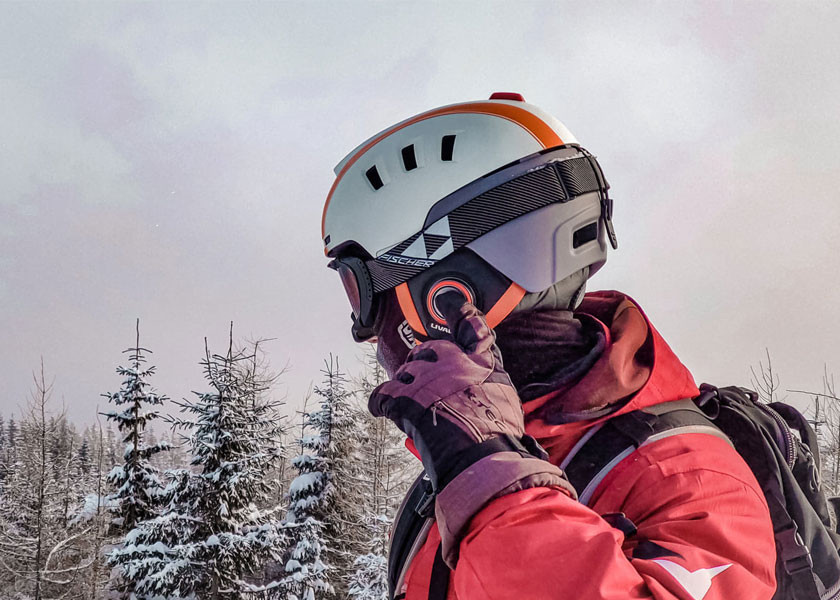
Smart Ski Helmets: Protect Your Head and Optimize Your Experience on the Slopes
In winter sports, safety and technology go hand in hand to provide safer and more exciting experiences. Smart ski helmets are the latest innovation in this field, offering not only the necessary protection but also advanced features that enhance comfort and connectivity on the slopes. What makes these helmets special, and why are they becoming increasingly popular among skiers and snowboarders? With various advantages over basic helmets, these smart options can completely transform your mountain experience.
What Are Smart Ski Helmets?
Smart ski helmets are specifically designed for winter sports. In addition to protecting the head in case of impact, they integrate advanced technology to enhance the user's experience. These helmets typically include features like Bluetooth connectivity, communication systems, impact sensors, and navigation functions, allowing skiers to stay connected and safe while enjoying the slopes.
This type of helmet represents a technological evolution in winter sports, combining innovation with protection to meet the needs of modern skiers.
Advantages of Smart Ski Helmets
Advanced Protection in Case of Accidents
The primary function of any ski helmet is to protect the head from bumps or falls, and smart ski helmets are no exception. Many of these helmets include impact sensors that detect severe falls and automatically send alerts to emergency contacts if the skier doesn’t respond. This can be a game-changer in situations where the individual is in an isolated mountain area and needs immediate help.
Moreover, these helmets are made with high-resistance materials that meet safety standards for winter sports, ensuring reliable protection on every descent.
Bluetooth Connectivity for Slope Communication
The Bluetooth technology built into many smart ski helmets allows skiers to stay in touch without needing to use their phones. With this functionality, you can make calls, receive messages, or listen to music directly from the helmet, keeping your hands free and avoiding unnecessary distractions.
For those skiing in groups, this feature is especially useful, enabling constant communication without needing to stop and use a phone. It’s also an excellent option for listening to navigation instructions, podcasts, or simply enjoying a great soundtrack while carving through the snow.
Navigation and Real-Time Location Features
Some smart ski helmets are equipped with GPS and mountain maps, allowing users to orient themselves on the slopes without consulting their phones. This functionality is ideal for those skiing in extensive or complex areas, as it simplifies navigation and prevents getting lost.
Additionally, real-time location systems let you track your skiing companions’ positions at all times. This technology significantly enhances safety in winter sports and allows skiers to explore the slopes with greater confidence and peace of mind.
Emergency Detection and Alerts
Smart ski helmets also include fall detection technology and motion sensors that identify if a strong impact has occurred. In the event of a fall, the helmet can automatically send an alert to emergency contacts with the skier’s exact location. This feature is particularly useful for those skiing in hard-to-access areas or exploring less crowded zones.
Comfort and Personalization
Smart ski helmets are designed with user comfort in mind. They feature insulating materials and ventilation systems that help regulate temperature based on weather conditions. Additionally, some models allow you to adjust music volume, personalize voice commands, and set alerts for speed or distance traveled.
This level of customization makes smart ski helmets a versatile tool that adapts to each skier’s preferences and needs.
What to Consider When Choosing a Smart Ski Helmet?
Compatibility and Battery Life
Battery life is a critical factor in any smart device, and smart ski helmets are no exception. Ensure the helmet offers sufficient autonomy for a full day of skiing, especially if you plan to use features like Bluetooth or GPS continuously.
Additionally, check that the helmet is compatible with your mobile devices and winter sports apps. This will ensure you can fully utilize the helmet’s functionalities without connectivity or setup issues.
Fit and Comfort
Proper fit is key for safety and comfort on the slopes. Smart ski helmets usually come with adjustment systems to adapt to the user’s head shape, ensuring adequate protection and reducing discomfort during extended use. Try different models and make sure the helmet feels comfortable and stable without shifting while skiing.
Materials and Durability
The durability and quality of materials are crucial in smart ski helmets. Ensure the helmet is made from resistant, high-quality materials that guarantee effectiveness in case of impacts. Look for models that comply with winter sports safety standards, such as ASTM and CE certifications, which ensure the necessary protection for snow activities.
Additional Features Based on Your Skiing Style
If you’re a beginner skier, you might not need a helmet with many advanced features. However, if you practice high-speed skiing or freeride, navigation and alert options may be essential. On the other hand, if you prefer skiing in quieter areas, you might value connectivity features more for listening to music or communicating seamlessly.
Smart ski helmets represent the perfect combination of safety and technology in winter sports.
If you’re a snow enthusiast looking for a complete and secure skiing experience, smart ski helmets are an investment that will allow you to enjoy every day on the mountain to the fullest!